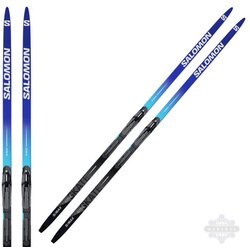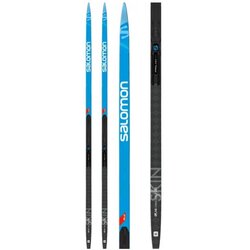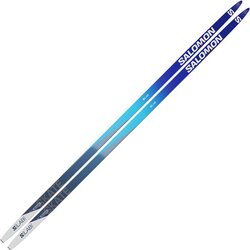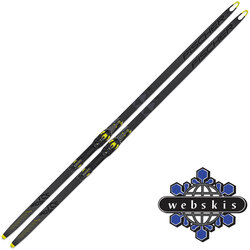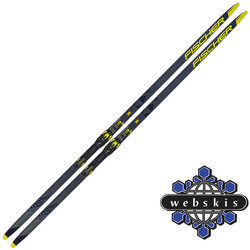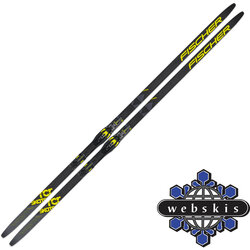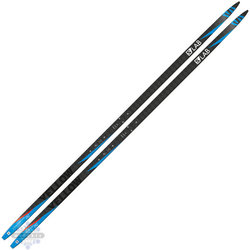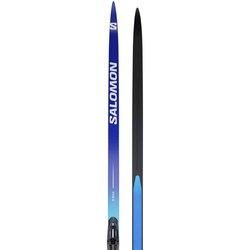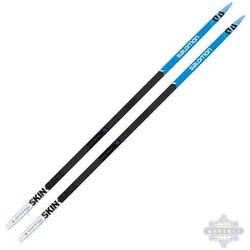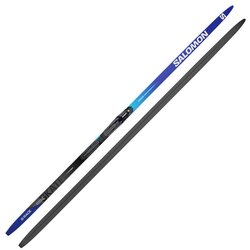Understanding Ski Flex

Author: Bert Hinkley, nordic ski expert at Webcyclery & Webskis
Last updated: November 2022
Why Is Ski Flex So Important?
How many of us have walked into a nordic ski shop, had the salesperson grab a pair of skis off the wall, and pronounce that "these should fit you just fine"?
Did they ask how much you weigh? How long you had been skiing? What your goals were with your ski's performance? What length of ski do you ski on now? Did they flex test the skis? Did they do a paper test with you? Do they know how tall you are?
If the salesperson didn't ask these questions, then he/she does not have any better idea of what skis are right for you than you do. Fitting and sizing nordic skis are very important. Not only does it mean that you have spent your money wisely, but it also means that you will get the most enjoyment out of your equipment. Ski flex can be between 85% and 90% of your overall ski performance. It doesn't matter how much $100 wax you pour into them, how many times you have them stone ground, or how many hot box sessions you put them through. If the salesperson on the front end doesn't put the time in, the skis will never match your body and therefore, never run well.
So What Is Ski Flex?
When we talk about flex, we are referring to how the skis support your body weight when on a groomed snow surface. Ideally, we look for a ski that will support your body weight while maintaining the longest running surface as possible on the snow. When you push off, the ski should feel snappy and almost give a little back at the end of the stride. If a ski is too soft, you will flex right through the camber and form a pivot point under your foot. In soft snow, this is OK because it allows the ski to "float" more through the snow. In firm snow, this can be quite scary though. When the ski is too soft, the flex flattens out and edge control becomes a thing of the past.
A good way to tell if your skis are too soft is, on a firm day, go out and balance on one foot. If you feel the ski moving below your foot to the point where it is tough to stay on top, the ski may be too soft. If a ski is too stiff, the opposite is true. Instead of flexing through the ski camber, you will not be able to compress the ski at all. As a result, you will be riding on the tips and tails of the ski almost all the time. A stiff ski is good in hard pack conditions because the surface you are pushing against is so firm, the edges will not completely flatten and the ski will maintain some of its bite on the ice. But, when conditions soften to even well groomed standards, a stiff ski can slow you down quite a bit. They will feel very solid going downhill, but when climbing, the tips and tails will punch into the groomed surface or "plow" and slow your progress considerably. Therefore, it is important to find the happy medium between too stiff and too soft.
We want a good, solid running surface that a soft ski will offer, but we want the support and edge control that a stiff ski offers. Sounds tough to find. Not so much. Most ski companies build their skis with these criteria in mind. The key is that no two skis are alike and even though the tag says so, the shop needs to put in some time to make sure the skis are flexed the way they are supposed to be and then match that with what the customer wants.
Is there a cross country ski flex chart?
In short, not really. Or at least not anything that would be definitive enough to reference on its own. There are a ton of factors that go into choosing the perfect set of cross country skis like style (race/classic/backcountry), ability level, your weight, and your personal preferences and goals. There are the basic principles of ski flex which we talk about at length in this article, but in reality ski flex is a piece of the puzzle and needs to be taken into consideration with all the other factors.
How Do You Know What's Right For Me?
That's where we come into play. Not only do we go through and flex test every pair of skis for the prospective buyer, but we are also well versed in the different companies philosophies behind the flex patterns of the skis. What this allows us to do is look at a specific skier and his or her style, and make manufacturer recommendations based on the inherent flex pattern of the ski. Different ski makers have different flex patterns that effect how the ski feels under foot. Even though a Madshus and a Fischer are flexed for someone who weighs 160lbs, they will "feel" different because of the manufacturers design philosophy.
We are equipped to help you make those choices in brands and flex to best suit you, not what we want you to ski on. To compliment our selection philosophy, we have assembled what we believe to be the best ski lines in the industry. We looked at base quality, attention to detail, flex consistency, and overall speed to offer brands that we know will ski well for anyone. We don't sell one line over another. We believe in all the brands that we sell, and if you ask us our opinion, we will put you on the ski that will work the best for you. If you already know what you want, we will do all that we can to find the right ski for you. If we don't have it in stock, we will order it for you. We will not sell a ski just to get it "off the floor." This sport is hard enough. Why would we want to make it harder by selling bad equipment?
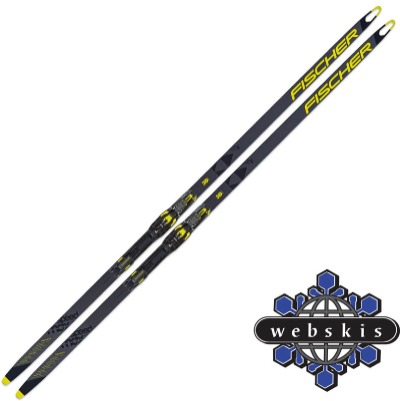
Skate Skis
Check out our skate skis that are perfect for races and lightning fast laps.
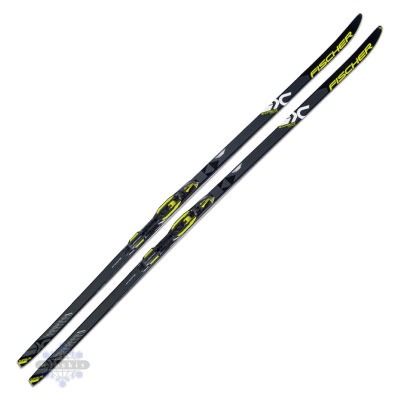
Classic Skis
Our classic skis are perfect for beginners and traditional nordic skiing.
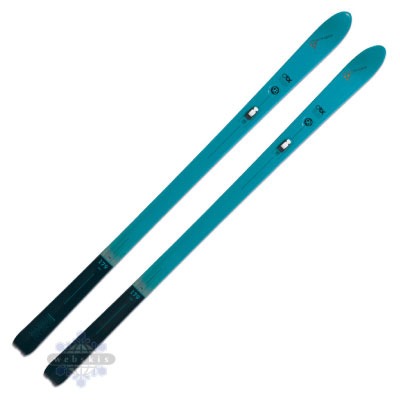
Backcountry Skis
Nordic backcountry skis are wider and designed for touring and better capability off-track.
Want to learn more about cross country skiing?
Check out our Nordic Skiing Buyer's Guide for an in depth look at the sport and tons of gear recommendations so you can be prepared for cross country season.

